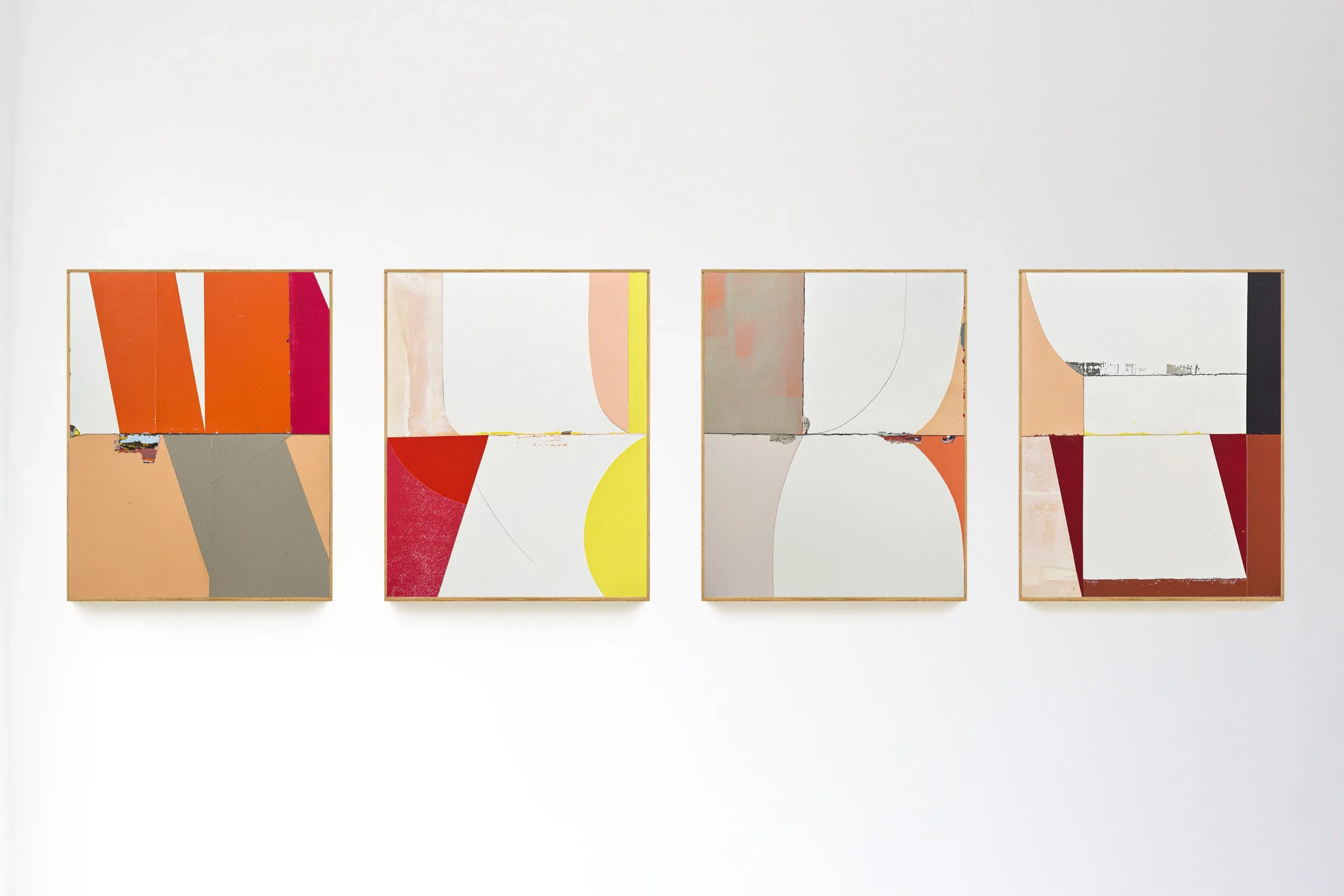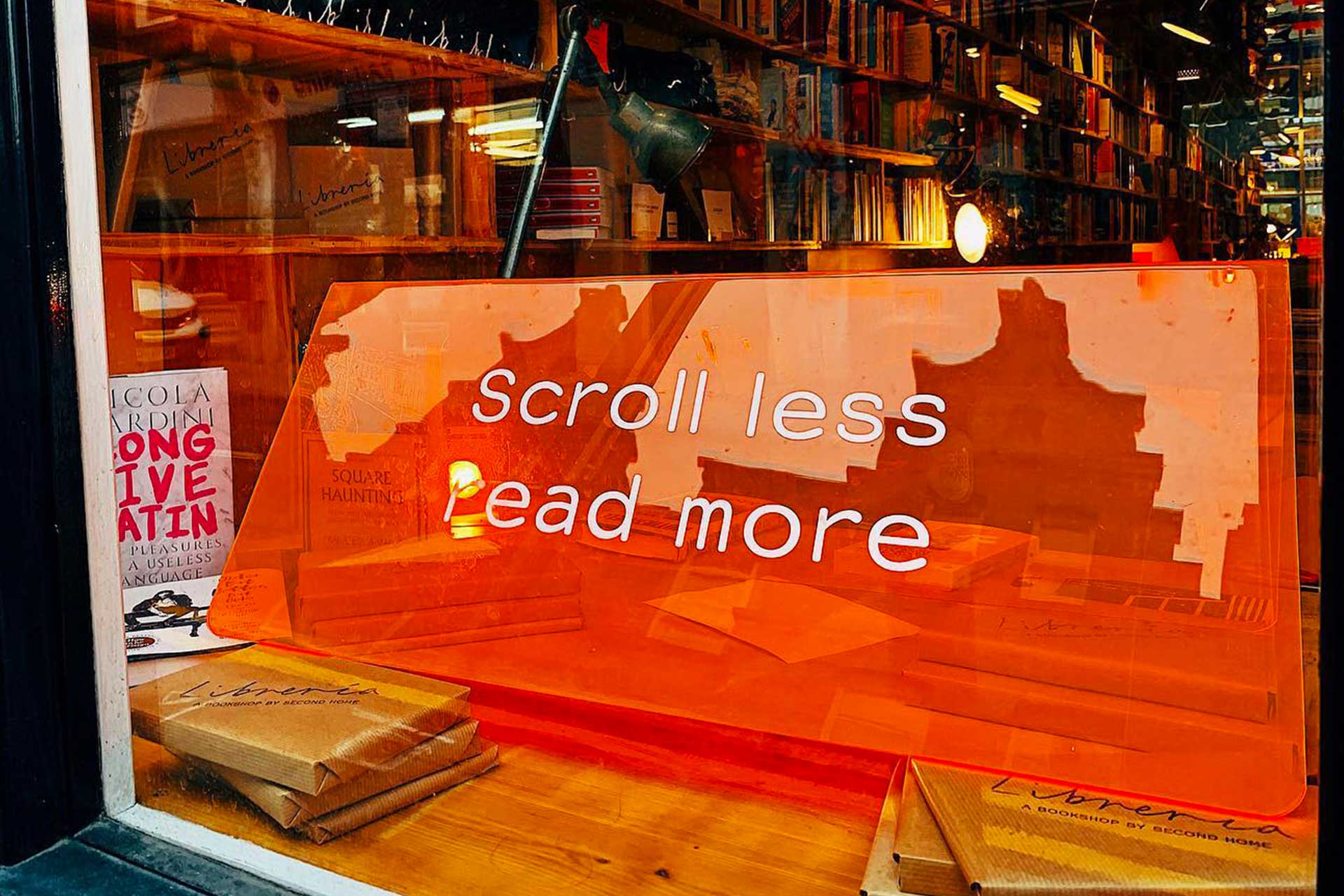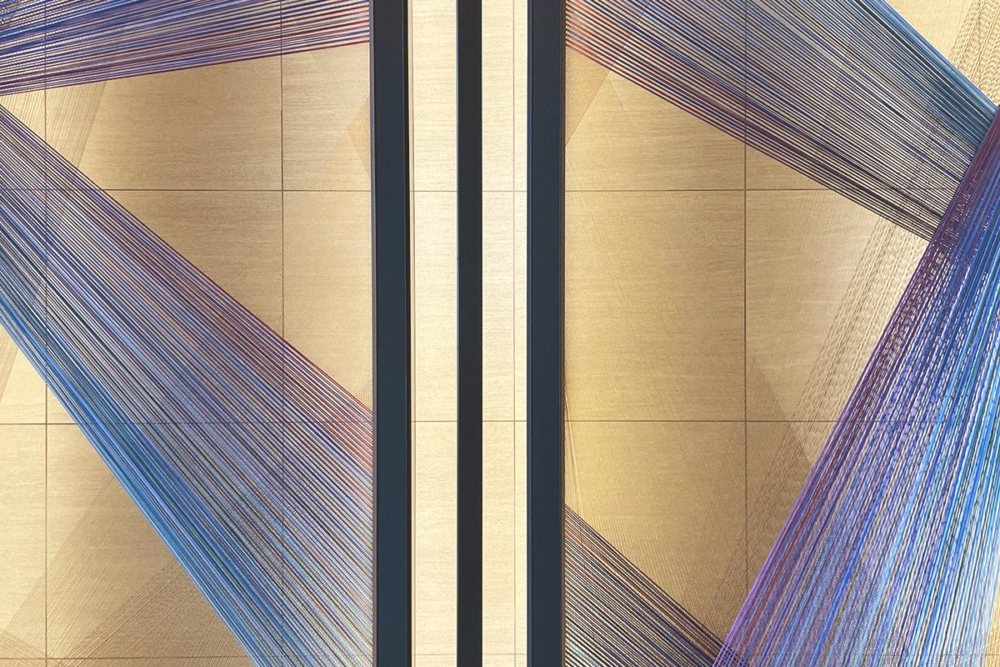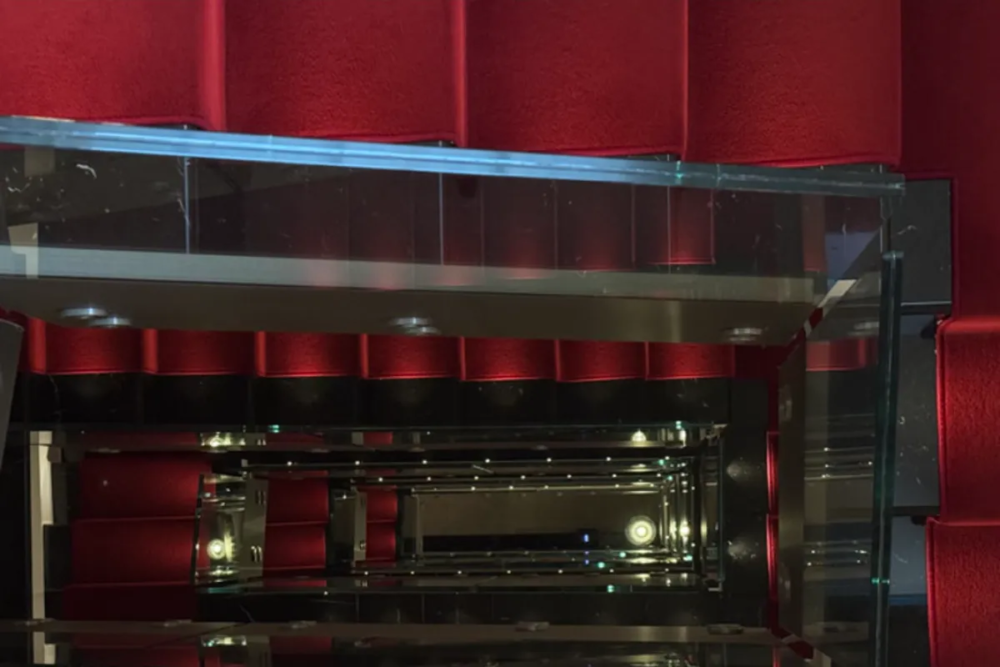
Barnard Gallery, Cape Town: Jo Hummel utilizes paper scraps in Looking Out
Jo Hummel is showcasing her first solo exhibition at the Barnard Gallery in Cape Town – the fault lines and marks of her paper constructed paintings reveal more than imperfections
Looking Out, with Jo Hummel
Born on the UK mainland and trained at the Royal College of Art London, Jo Hummel is now living on the Isle of Wight, where she grew up. Looking Out, the title of her current exhibition in Cape Town, has more than a straightforward meaning. The concept behind it is anchored in the ocean and in the nature of the Isle of Wight, which have surrounded Hummel all her life.
The island functions as a spiritual home for the artist. Looking out onto the horizon and staring at wide panoramic views means more searching for quietness and peace to her: it means to connect with her inner self, experimenting with self-research.
By doing so, painting becomes a meditative practice, where the horizon and her native coastline is a continual motive within her work, visually and aesthetically. The variations of colors and forms in the artworks would mirror the study of her consciousness. She explains: «Having a panoramic view calms the human body. That conscious state allows me to access the areas in my internal landscapes that I want to explore to make the work. This idea of Looking Out is also a symmetry of looking in».
The love for paper: Newspapers, paper bags, handwritten notes, birthday cards or wrapping papers
Hummel has chosen paper as the main element for her constructed paintings for multiple reasons. First of all, she believes paper of everyday use to be emotionally charged with familiarity and intimacy. Newspapers, paper bags, handwritten notes, birthday cards or wrapping papers: any kind of domestic paper can be an element of her paper collage surface. «I am one of these people that has always kept lots of things like tickets», explains the artist. «Familiarity is charged with emotions and history. When I find other people’s shopping lists, I have to pick them up. I love the fact that I could use something touched by another person’s hand and turn it into something else».
Hummel´s interest in paper lies in its practical aspect as well. Working with paper is not as frightening as working with oil painting on canvas, given that paper elements can be easily chopped out. Also, paper is less expensive. The whole working process gives Hummel the freedom she needs, both to take risks and to make mistakes.
Her interest in showing honesty and realness in the artwork is to be found in her fascination for other artists’ preliminary sketches as well. She reveals: «There will always be a painting from an artist’s sketchbook that you can look at besides the painting». The excitement of having access to that kind of intimate revealing experience, compared to the big show of something finished, is what the artist took along with her in her artistic journey.
How limitations create a safe arena: Jo Hummel in Cape Town
Between the limitations of paper, Hummel mentioned how problematic the size of paper was at the beginning. «Paper usually comes in the size of a sheet. That was problematic at the start. I wanted to make big paintings and big statements». Studying how to create art without renouncing her spontaneity, Hummel transformed the limitation of paper size into an essential part of her artistic language.
As she mentioned: «The grid is driven by the paper the way it’s produced. It comes to my studio like that, I don’t have to change that. It provides this kind of safe arena for spontaneity. Every piece of work is not planned, none of them are planned. I cannot make pieces of work that are pre planned, they would not be interesting for me and they would not be a successful painting». Hummel managed to convert the paper grid into a safe arena from which to work through instinct. She explains: «I have to work spontaneously because the work is about capturing that consciousness on that day».
Imperfections represent realness: real found material scraps
Jo Hummel´s artworks are based on her commitment to honesty and realness. Employing real found materials for her collage paintings can reveal blobs of paint, marks or fault lines. Hummel does not condemn any of those imperfections: scars add to the painting rather than take away. Marks are allowed to stay in the final painting because they don’t affect the art. As she explains: «The human fall of perfectionism is something that I am working on. I am trying to not fall victim to, which can be easy. That’s something creative you can get possessed by perfectionism. This is not conducive to a sort of realistic healthy way of making work. I allow these accidents and rabbishy bits to stay part of the final painting. The perfectionist cannot handle it».
Looking Out – a meditative change from chaos
While exploring ways to present paper, Hummel has not only focused her attention on realness and honesty, but also on reduction as well. Not only did she limit the range of colors used in her paintings but she also worked on reducing the distance between the paintings and the public by removing protective glasses. A difficult decision made over time, based on her willingness to emphasize the vulnerability and the preciousness of artworks. Talking about Looking Out, she mentioned how the exhibition summarizes all her concerns: «In the past I was more interested in chaos – without knowing it, but that’s what came out – whereas this work is still. Almost meditative».
[envira-gallery id=”122542″]
Championing the underdogs – Oil painting vs. lowbrow paper
While growing up, Hummel struggled a lot to accept the rigid class system of Great Britain. After the divorce of her parents, the artist had to live in different cities. The split into different cultural settings and environments meant for a long time to coexist in different dimensions.
The only way to make honest art meant to switch between different communities: «Which personality or which part of Jo is going to speak now to this person from this part of England or to the other person? I got used to flip nuances», declared the artist realizing her need to shift thinking patterns. «I had to change my behavior and understand which material could have been accepted in that land, in that community and which other nuances that could have been accepted in other communities. The action of flipping, shifting or swapping the paper is what I know well. I was mirroring something I did in life, in the world».
From that moment on, her artistic practice started to express other meanings, leaning toward critics of class discrimination. Declaring paper as her main work element, Hummel found her personal way to celebrate the ordinary value of simple things. As she puts it: «it feels like championing the underdog». According to the artist, materials and elements of everyday life – from a paper note to a particular wallpaper pattern – could be as intimately and emotionally charged in the lives of a community as much as in the lives of others. She explains: «Why the hell should the oil painting be so great when something that is just lowbrow can be equally as interesting?»
Switching to digital media: virtual layering and back to paper
Hummel’s artistic journey has not been straightforward. The artist decided to switch to digital media at an early career stage after feeling frustrated with painting. The immediacy of the endless options offered working in digital media and the speed in which changes can be made excited her. However, although the freedom of virtual layering felt essential to her, Hummel soon fell out of love with the digital media. The same working process which once was fascinating, at a certain point started to miss the physical and direct contact with materials. The idea of sitting down and working at the screen started to feel reductive. This is the moment in which Hummel set up her studio and started to work on collages, transposing her photoshop experience with endless choices of layers to the paper, following patterns underpinned by physical, and intuitive collage processes.
The concept of «building, instead of painting» is something that the artist has brought with her since an early age. Looking back to childhood, she remembers when her father built a boat. The young Jo Hummel used to spend nights sleeping on the bow, lying there full of excitement and being fascinated by the idea of being in physical contact with a hand-made construction project. As she explains: «Some of this definitely fed into my practice of wanting to build, rather than to paint».
Jo Hummel Showing at the Barnard Gallery
The Barnard Gallery was founded in 2010. Situated in Cape Town, the gallery´s main program focuses on contemporary art from Africa and Europe, representing emerging and mid-career artists. Hummel´s idea of a solo exhibition in Cape Town came to life after meeting the creative director Alastair Whitton. «That was a brilliant place to start», she states. The artists soon started to discuss her solo exhibition and carried on working together.
Hummel holds Whitton in respect for the way he seeks emerging artists. They both want to primarily prioritize artists’ voices and the way artists need to express themselves. Hummel believes that diarizing art practices using social media represents a fascinating process, given the infinite unique possibilities that artists have to show art processes online. Artists can engage with the audience immediately through sharing their practice from the studio. She explains: «Culturally today’s artists have stronger voices because of social media. The voice of the artist is changing and is not being translated anymore by second or third parties. Alaistar is creative himself and I have the feeling that he is moving with that shift».
The engagement on the African Continent: Cape Town Art Fair
Barnard Gallery has presented a number of significant solo exhibitions and participates regularly in local and international art fairs. Between these, the Cape Town Art Fair, where Hummel´s works have been included in 2022. This project represented Hummel´s first engagement on the African continent.
She confesses: «It’s the furthest my work has traveled». Looking further afield for engagement, Hummel has started to link with other artists in South Africa using online platforms, creating a sort of community of abstract painters. According to her, both Europe and South Africa are currently experiencing a resurgence in contemporary abstraction, considering the presence of a «wave of hard edge, geometric and reductive paintings».
To exhibit a solo body of work and be included in an art fair presentation on the African continent is an absolute privilege for Hummel. She explains: «I am interested to know what the feedback would be. With every new country there is a new angle of perspectives and ideas».
Barnard Gallery, Cape Town
55 Main Street, Newlands, Cape Town. Barnard Gallery Barnard was founded in 2010 by owner and director Christiaan Barnard. It represents both local and international emerging and mid-career artists.







